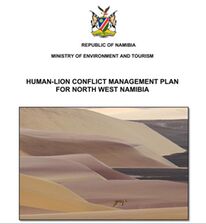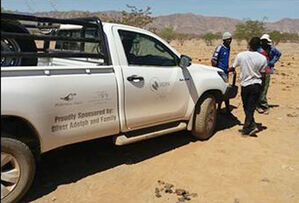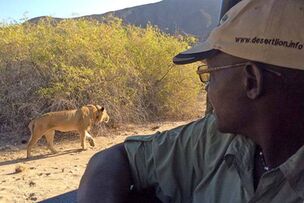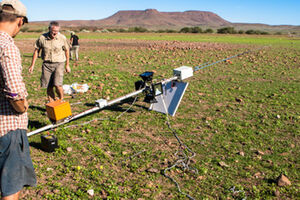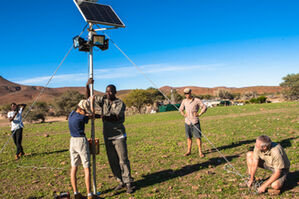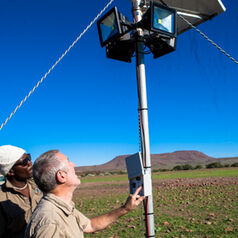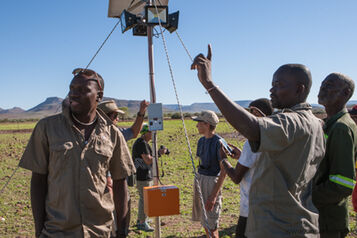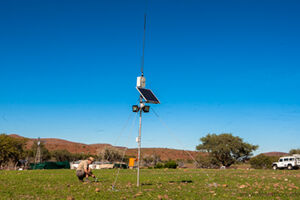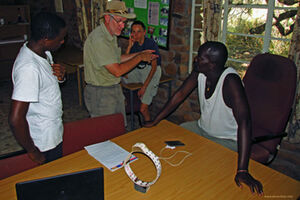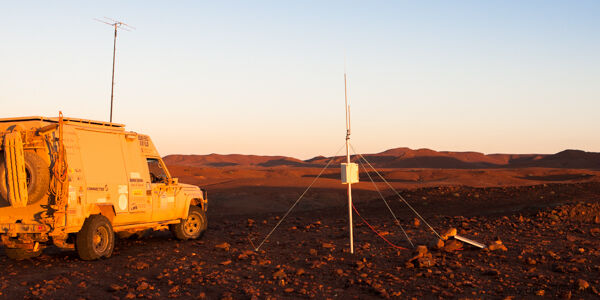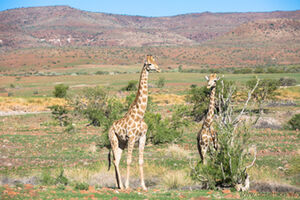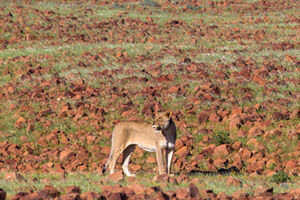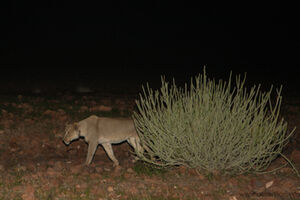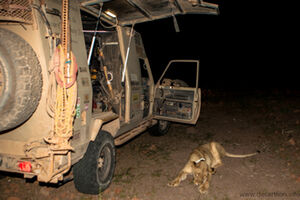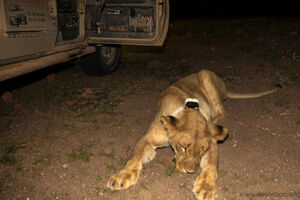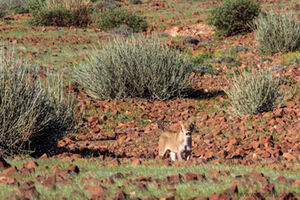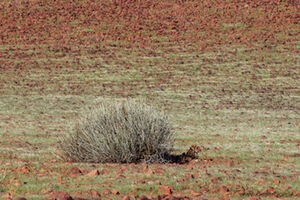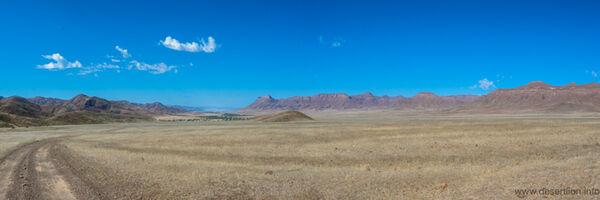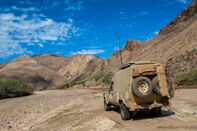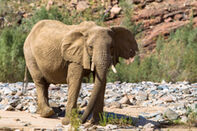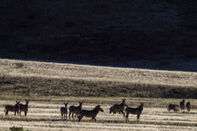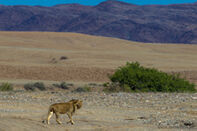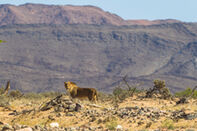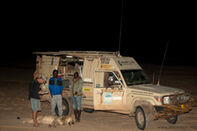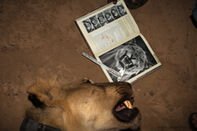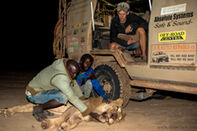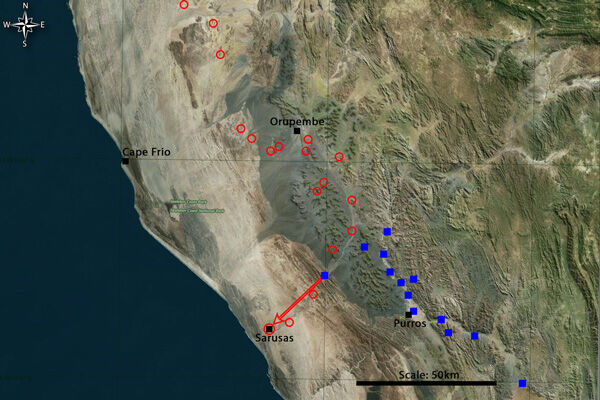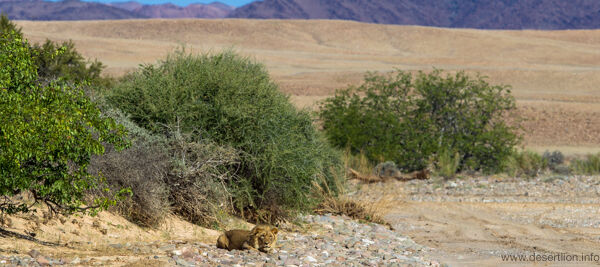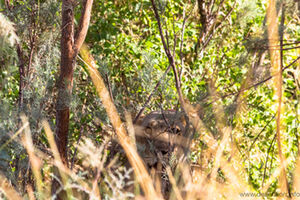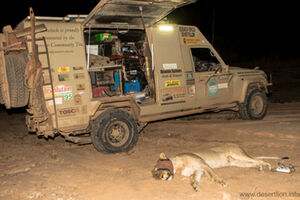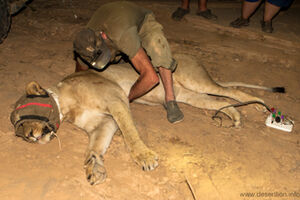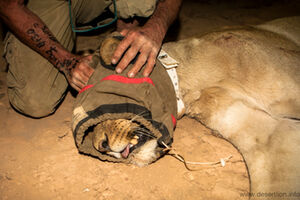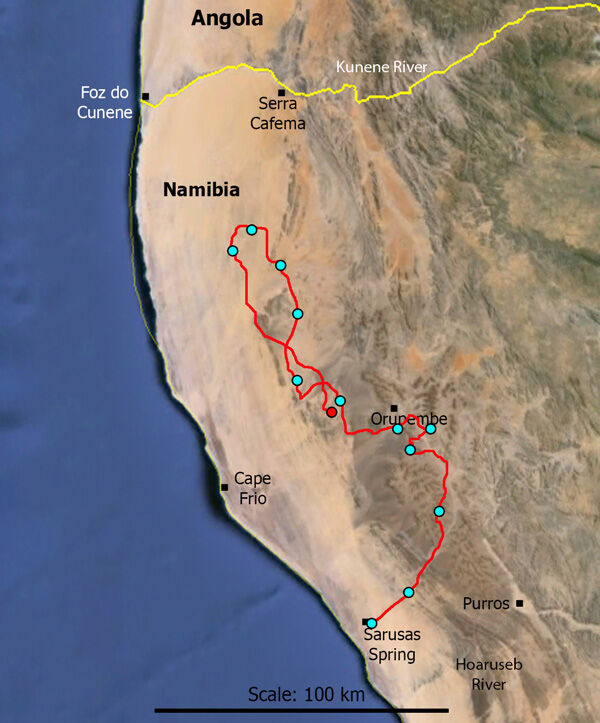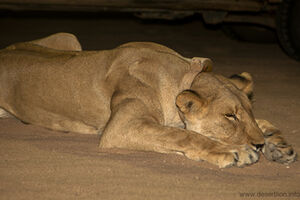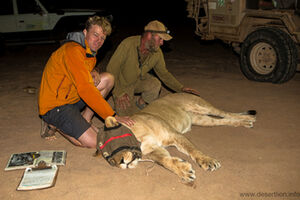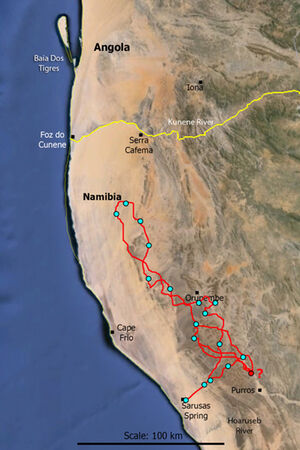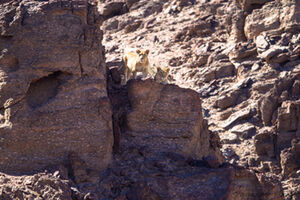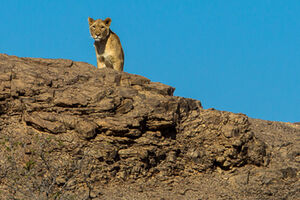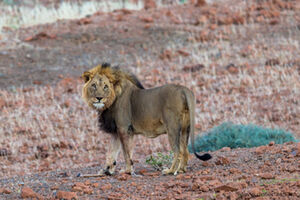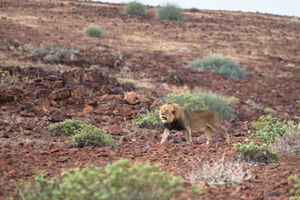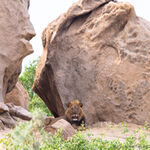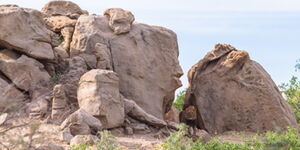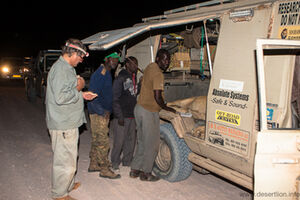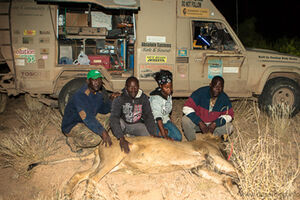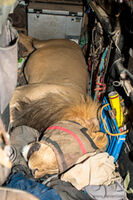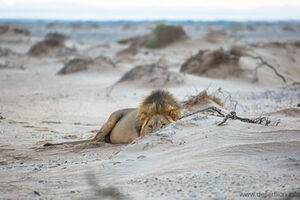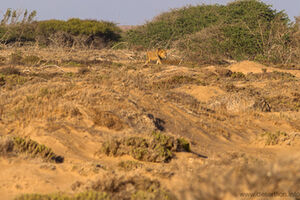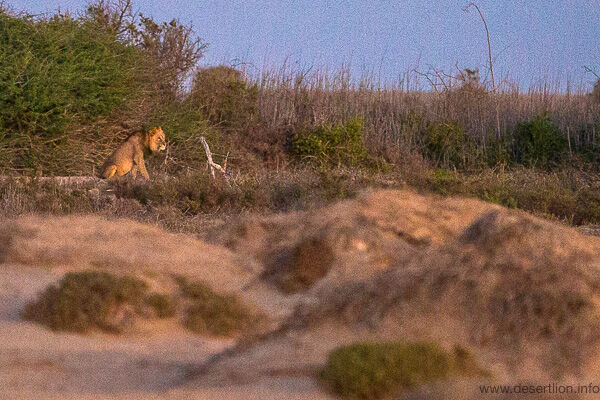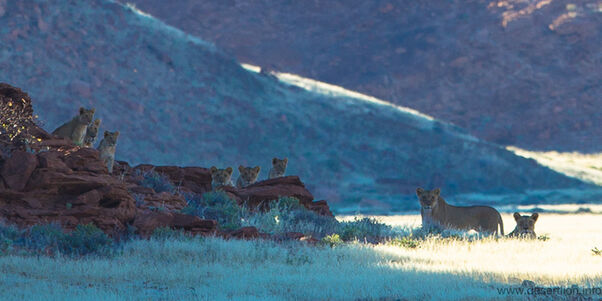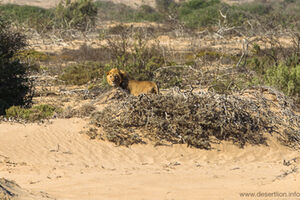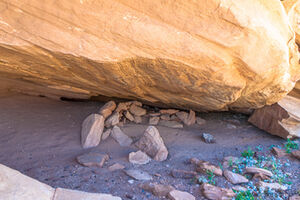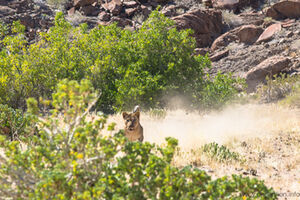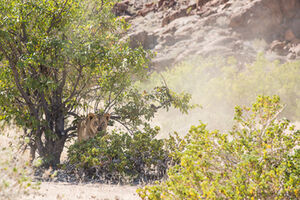NW Human-lion Conflict Management Plan
Progress was made with the development, approval and implementation of an action plan to systematically address incidents of human-lion conflict in the northwest of Namibia. The Ministry of Environment and Tourism took the lead on these developments. A workshop was held at Otjikoto Game Reserve on 11-12 Sep 2017 to discuss the technical aspects of the management plan. The meeting was attended by 17 key individuals from the Ministry of Environment and Tourism, WWF-Namibia, Namibia Chambers of Environment, IRDNC, Desert Lion Conservation, Africat Foundation and the Kwando Carnivore Project. Discussions focussed on identifying the priority areas of intervention and to develop an action plan for implementation. This led to the establishment of the North West Lion Working Group that were tasked with coordinating the systematic implementation of the management plan.
The North West Human-lion Conflict Management Plan was officially launched by the Hon. Tommy Nambahu, Deputy Minister of Environment and Tourism during a media event in Windhoek on 22 Sep 2017.
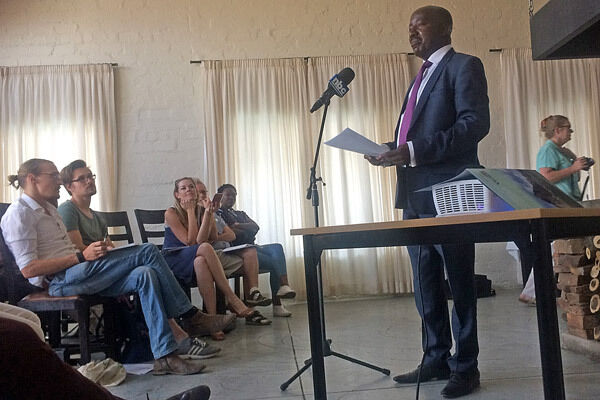
An important development that came out of this process was that of collaboration. In an optimistic and positive spirit all the relevant stakeholders were in agreement that working together was essential to the process of addressing human-lion conflict in the region. A total of 18 key stakeholders, including Government Ministries, regional authorities, conservancy bodies and conservation NGOs, were identified that are participating in this initiative. A list of priority actions was identified and the process of implementing the North West Human-lion Conflict Management Plan was initiated.
A Rapid Response Team was established with the acquisition of an equipped vehicle and the appointment of Cliff Tjikundi. The team was strengthened by the inclusion of Rodney Tjavara from Tomakas, and they set off to discuss the implementation of the North West Human-lion Conflict Management Plan with the relevant conservancies, Traditional Authorities and Regional Councillors. In addition, progress was made with the development of "early-warning" systems and the erecting of suitable lion-proof corrals. A total of seven satellite and two GPS radio collars were fitted to two adult male lions and five lionesses. The Rapid Response Team, IRDNC and Namibia Nature Foundation worked with the Purros, Sesfontein, Anabeb and Tsiseb Conservancies to appoint "Lion Rangers" for each conservancy.
Read more about the Lion Rangers
April 2018
Early-warning and monitoring systems
The first Logger Early-warning systems was erected at Driefontein in the Torra Conservancy. Driefontein, in accordance to the NW Human-lion Conflict Management Plan, was identified as one of the conflict “hot-spots” where problems with lions have occurred repeatedly over the past 20 years. Cliff Tjikundi, of the Rapid Response Team, and several Lion Rangers assisted with the erecting and testing of the system. They also received training on the working mechanisms and maintenance of the Earl-warning system. The Minister of the Environment & Toursim will officially unveil the structure later this week when Cliff and the Lion Rangers will present a demonstration of the working mechanisms.
In addition to the Logger Early-warning system at Driefontein, a “Satellite Logger Unit” was erected along the Uniab River. This unit will monitor lion movements, download GPS data stored on lion collars, and relay the information via satellite to the Central Server. A large area between the Hunkap and Huab Rivers were covered in search of lions in order to fit the newly modified radio collars that are compatible with the Logger and Early-warning units. The extensive rains, however, has complicated the field work as ungulate species (e.g. gemsbok, springbok & zebra) have dispersed in search of green grass.
An adult lioness was captured in the upper reaches of the Koigab River and fitted with a new Logger collar that will communicate with the Early-warning system erected at Driefontein.
May 2018
Testing of Early-warning systems
The first Logger Early-warning systems that was erected at Driefontein in the Torra Conservancy on 23 Apr 2018 was tested thoroughly. The unit responded well to an Early-warning radio collar that was mounted on the Rapid-response team vehicle of Cliff Tjikundi and provided accurate early-warning alerts. An initial snag with the satellite modem communications between the Driefontein Early-warning unit and the central server was corrected. Two lions fitted with Early-warning collars moved along the Springbok River towards Driefontein on 30 Apr 2018, but not close enough to trigger the Logger Early-warning unit. These movements, however, provided an opportunity to test the secondary Early-warning system that relies on the daily movements of lions fitted with satellite collars. Torra Conservancy and the Driefontein residents were informed of the lion movements and they responded by moving their livestock away from the area.
June 2018
Purros Lion Problem
For several weeks an adult male lion has been reported moving along the Gomatum River to Purros where livestock losses occurred (blue squares: see map below). The situation was monitored by Cliff Tjikundi of the Rapid-response team and several Lion Rangers as it escalated into a broader Human-lion conflict problem that extended to the Khumib River. The Lion Rangers and John Heidinger were joined on 14 May and an extensive search was launched along the upper Hoaruseb River to locate the lion.
After three nights of tracking the male lion was located in the Khumib River close to the border of the Skeleton Coast Park.
With permission from the Ministry of Environment & Tourism, the lion was immobilised, fitted with a satellite radio collar and translocated to Sarusas spring 35km further downriver (see map below).
The lion remained close to Sarusas spring for two days (red circles: see map) and then moved eastwards along the course of the Khumib River. The lion then moved northwards and crossed over to the Sechumib River towards Orupembe.
Purros Lion Problem
The young adult male lion that caused problems around Purros at the end of May 2018 was followed to the Khumib River where it was immobilised, fitted with a satellite radio collar and, with permission from the Ministry of Environment & Tourism, translocated to Sarusas spring 35km further downriver (see map below).
After recovering from the anaesthetics the lion moved eastwards along the course of the Khumib River (red circles: see map) before crossing over to the Sechumib River towards Orupembe. The male spent several days near Orupembe and then continued moving northwards, crossing the Nadas, Munutum and Engo Rivers, and reached the bottom of the Hartmann’s Valley. These movement patterns are similar to those of other dispersing male lions, such as the Sechumib Nomads in 2005, Xpl-29 in 2007 and Xpl-68 “The Terrace Male” in 2013.
Early-warning and monitoring systems
The process of implementing the NW Human-lion Conflict Management Plan continues. A large area of the Hoanib River, including the major tributaries and Elephant Song was covered in search of the resident lions. Due to the exceptional rainfall several weeks ago there are few animals utilising the dry riverbeds and, as a result, the lions have been difficult to locate. A lioness of the Hoanib Pride gave birth to a litter of cubs near the new lodge of Natural Selection. An adult male lion was tracked for 32km but moved into an inaccessible area east of Elephant Song before he could be immobilised. An Early-warning collar was fitted to a lioness that occasionally venture close to Sesfontein and kill livestock.
Purros Lion Problem
The young adult male lion that caused problems around Purros at the end of May 2018 and translocated to Sarusas spring has continued to explore the northwest corner of Namibia (see map).
After spending several days near Orupembe where livestock losses were reported, the lion continued moving northwards and entered the dune-sea to the west of the Hartmann’s Valley. The lion then turned back and is currently heading southwards towards Orupembe.
Early-warning and monitoring systems
The process of implementing the NW Human-lion Conflict Management Plan continues. Another adult lioness was immobilised and fitted with a satellite collar. Luuk Eikelboom of CARE, who is currently running the Desert Lion website and providing technical support to the Project, attended the occasion.
July 2018
Purros Lion Problem
The male lion that was translocated to Sarusas spring after causing problems around Purros at the end of May 2018 has disappeared. The lion returned to the area of abundant donkeys along the Hoaruseb River 10km north of Purros (see map). His satellite collar stopped transmitting positions five days ago. There were no reports suggesting that the lion may have been shot. Cliff Tjikundi and the Rapid Response Team are investigating the incident to determine if the radio collar had failed.
Early-warning and monitoring systems
During the past two weeks additional funding has been secured for the
of implementing the NW Human-lion Conflict Management Plan. Incidents of human-lion conflict occurred at Ganamub village and again at White Lady Lodge. Both cases were investigated and efforts are ongoing to fit Early-warning collars to lions.
Okongwe Mountains / Hoanib River
The spoor of an adult male that killed four cattle near Ganamub village was followed for four days. The lion eventually moved into an inaccessible mountainous area and the search had to be postponed. The three lionesses that were recently collared were monitored and the fourth lioness in the Hoanib River has produced a litter of two cubs.
Obab / Barab Rivers
An adult male lion that utilises the Barab and upper Obab Rivers was observed followed for two days. He was immobilised and fitted with a GPS Early-warning collar.
Ugab River
The human-lion conflict problem that occurred at White Lady Lodge in January 2018 continued as the adult male killed many livestock. The lion also visited the White Lady painting that disrupted the tourism activities in the area. In collaboration with the Ministry of Environment & Tourism, the Tsiseb Conservancy and IRDNC, efforts are currently underway to resolve the problem.
Increased HLC white Lady area
Incidents of human-lion conflict increased in the White Lady area of the Brandberg during the past few weeks. The adult male, Xpl-110 who was involved in the killing of 172 sheep in Jan 2018, entered the White Lady Lodge perimeter on several occasions, killed livestock and moved through the campsites. Under the guidance of the Ministry of Environment & Tourism, the problem was assessed over a six-day period. The second Rapid Response officer, Linus Mbomboro, IRDNC and several Lion Rangers (from Tsiseb, Sesfontein & Anabeb Conservancies) participated in the exercise and received valuable practical training.
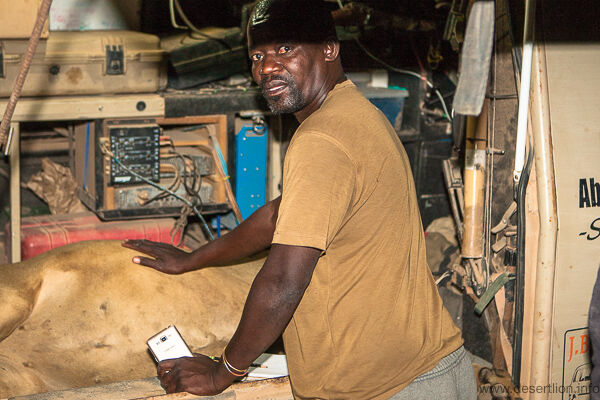
Linus and the Lion Rangers conducted a detailed survey of livestock losses in the White Lady area during recent weeks. The results were alarming and several households had lost a substantial proportion of their stock to lion predation. The movements of Xpl-110 through the White Lady Lodge campsite and a visit to the White Lady painting had become a risk to public safety. The Ministry of Environment & Tourism decided to attempt translocating the male to the mouth of the Ugab River as last effort to save the animal. If the lion were to return to the White Lady area, he would then have to be removed from the Northern Namib all together, or destroyed.
At 19h11 on 23 Jul 2018, the male lion Xpl-110 was immobilised in the marsh 3km west of the White Lady Lodge.
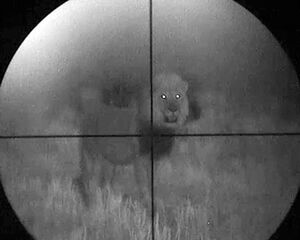
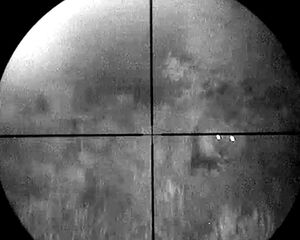
The opportunity was used for training of Linus and the Lion Rangers. The lion was loaded in the Desert Lion research vehicle and the long trip to the ocean began.
We reached the mouth of the Ugab River at 03h30. Xpl-110 recovered quickly from the long sedation and by 05:10 he started exploring the surrounding area and the Ugab lagoon.
August
Human-lion Conflict Management
The Ugab male, Xpl-110 who was translocated to the mouth of the Ugab River, has returned to the White Lady Lodge. The lion has unfortunately become a risk to public safety. The Ministry of Environment & Tourism has been informed of the situation.
Early-warning and monitoring systems
During the past two weeks a large section between the Ugab and Uniab Rivers was surveyed for lion movements. The late and exceptional rainfall in April 2018 has complicated field work. Many of the river systems are still inaccessible due to flooding and the movement patterns of lions are unusual due to a shortage of prey. Several groups of lions were observed and the age and sex structures of the prides were updated.
A sub-adult lion that displayed unusually aggressive behaviour was observed in the Ugab River. The lion charged the research vehicle on several occasions. It is suspected that the lion had been harassed by vehicles in the Ugab River.

